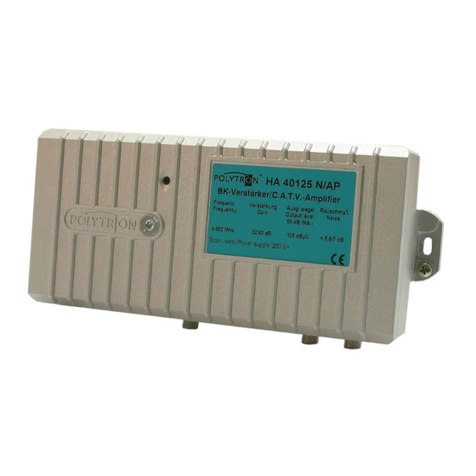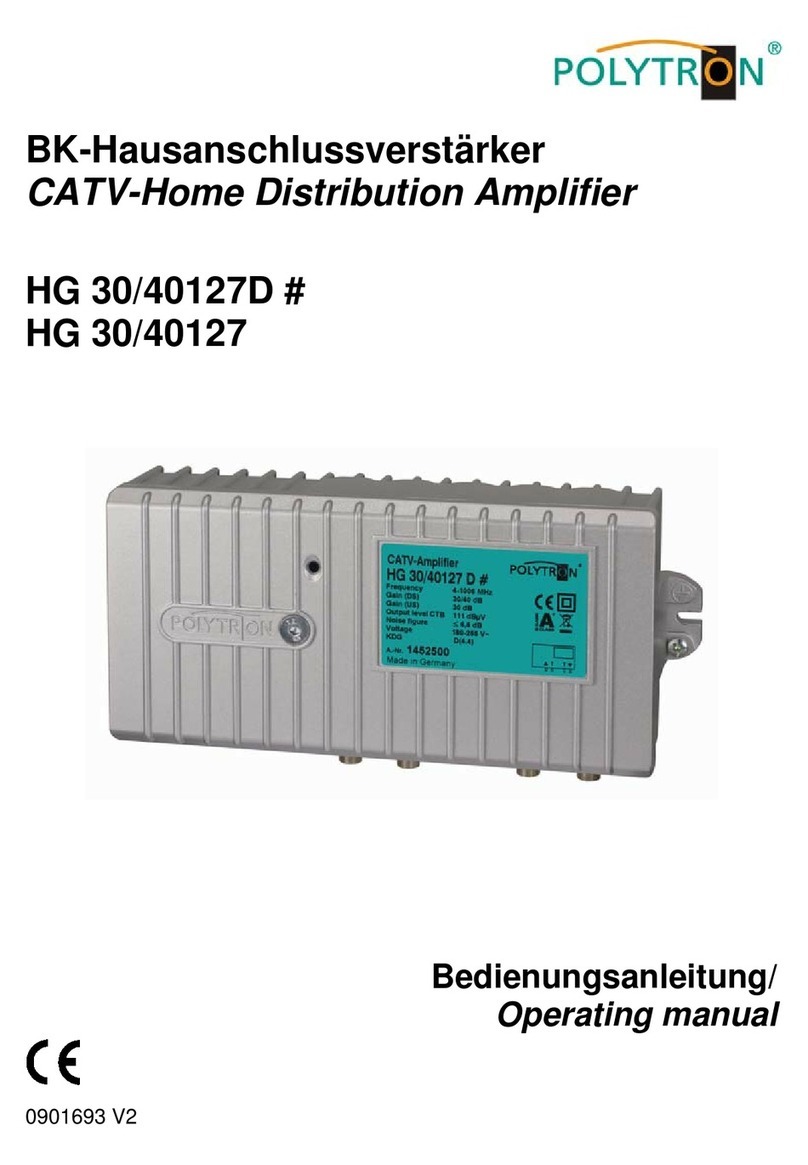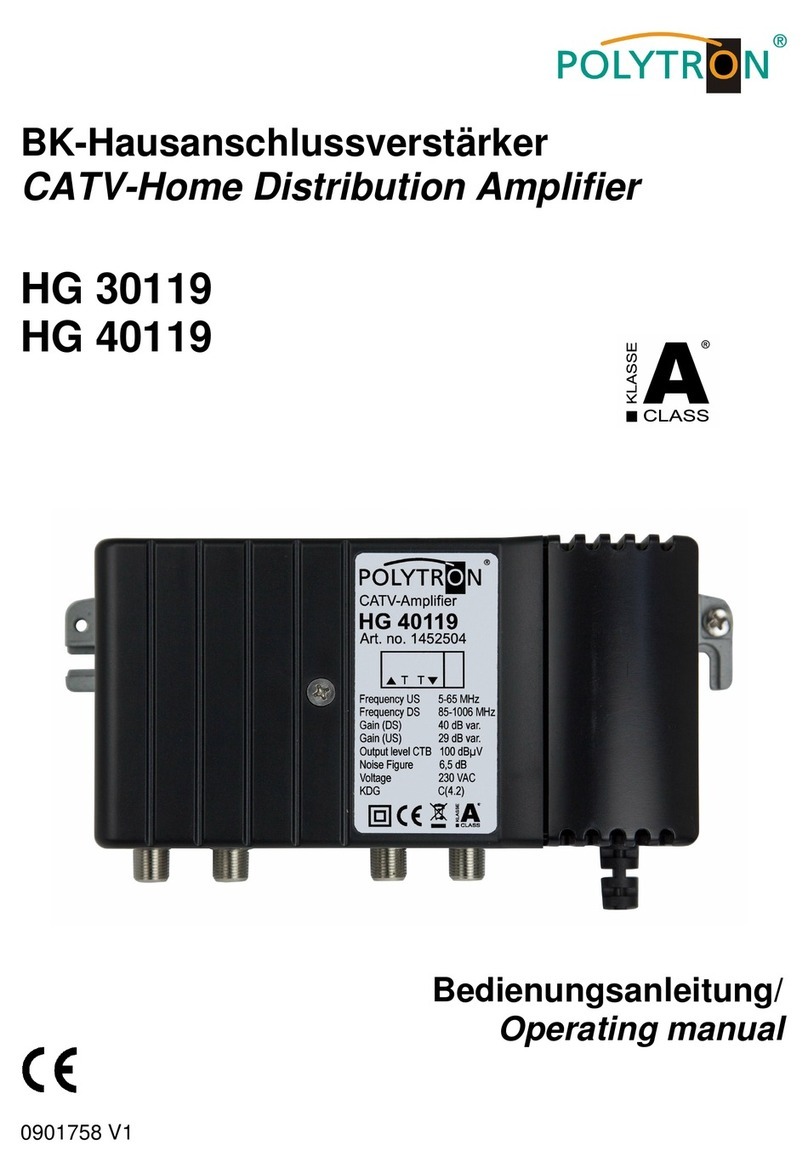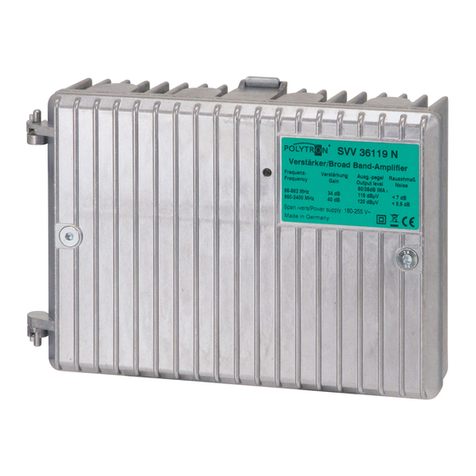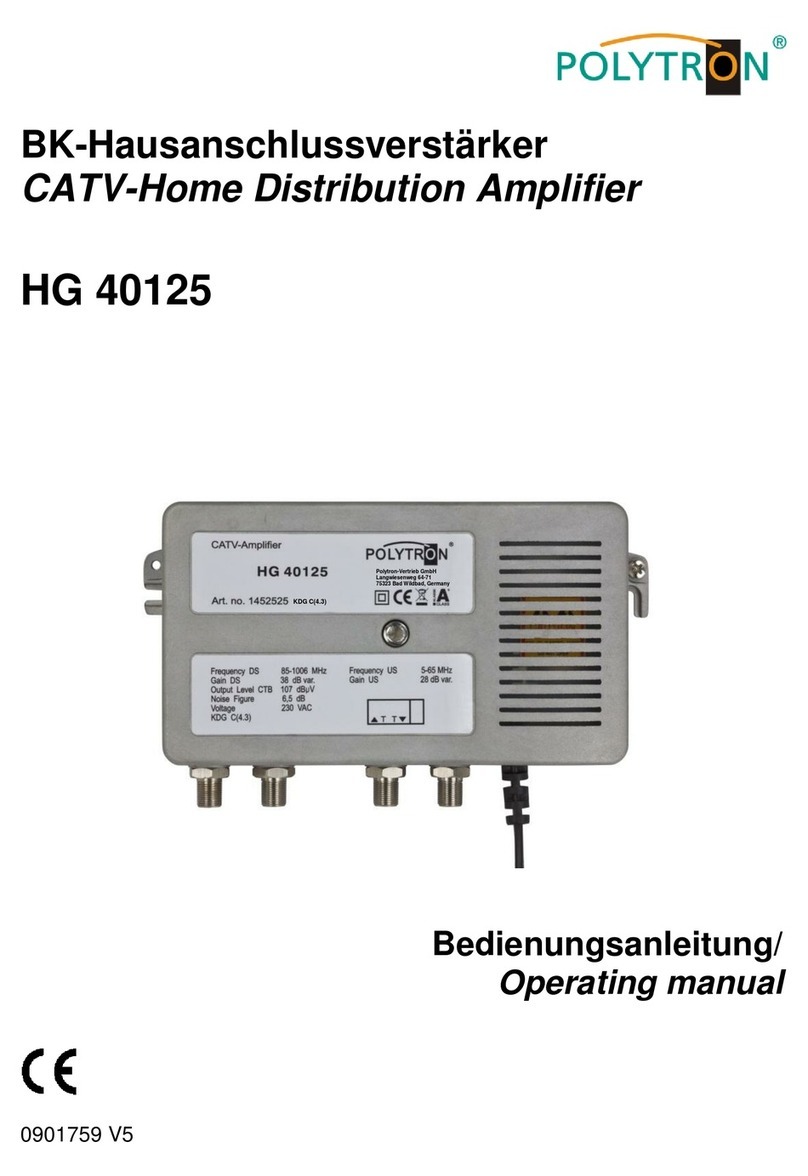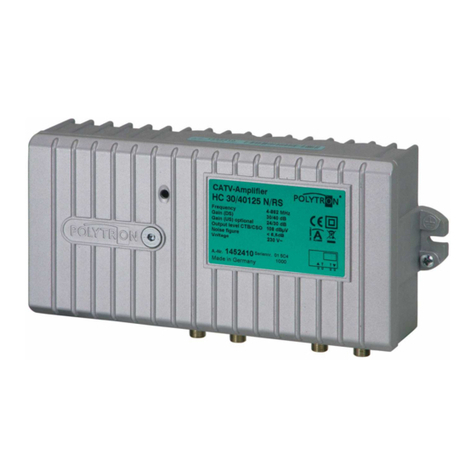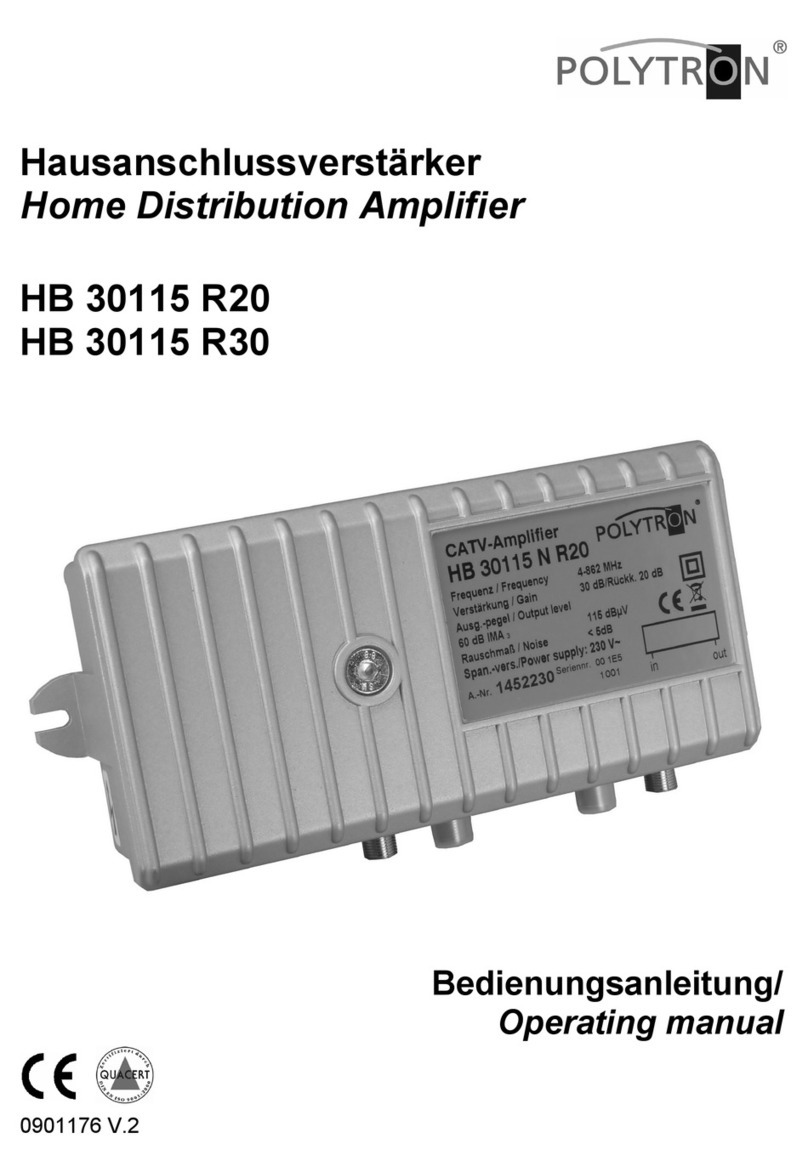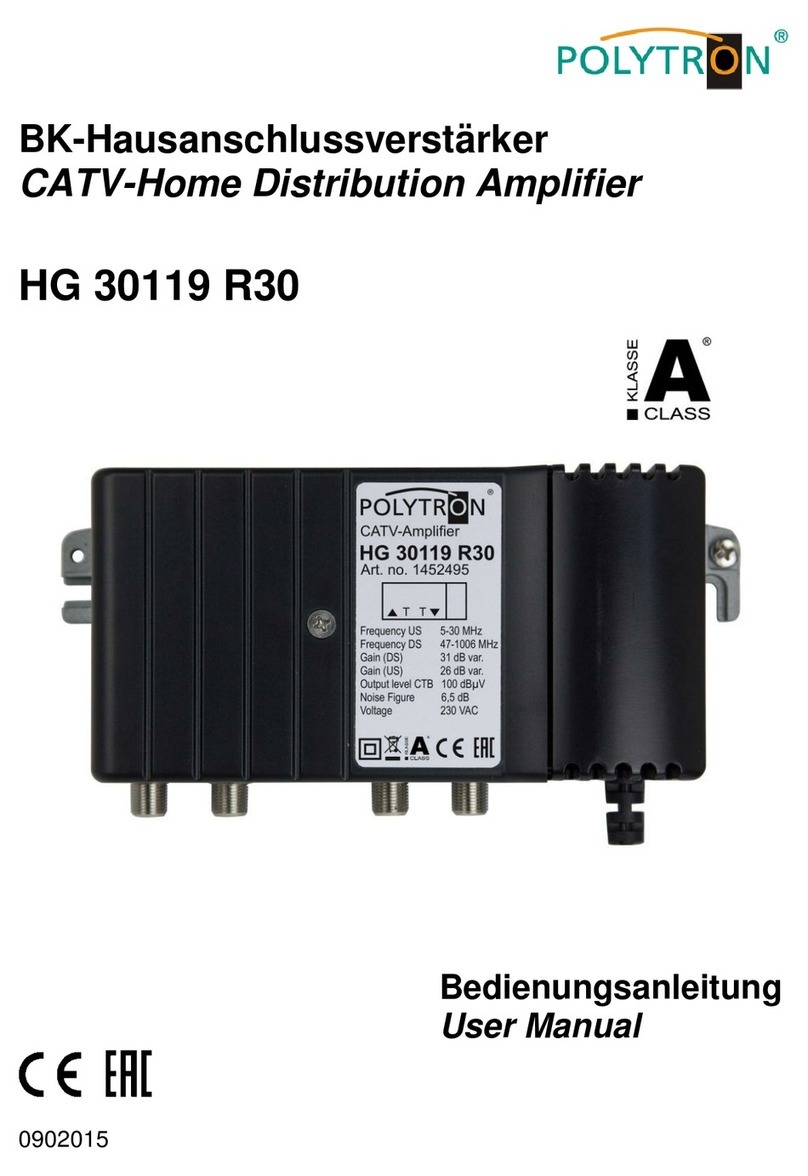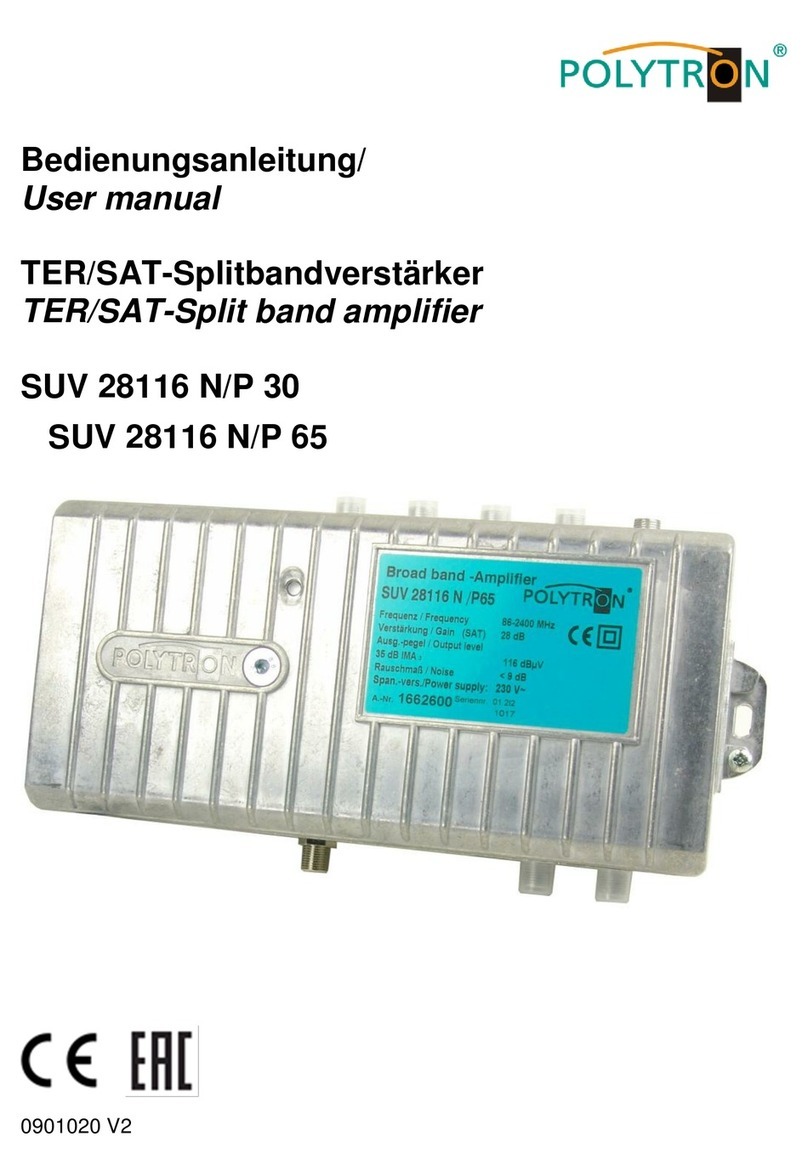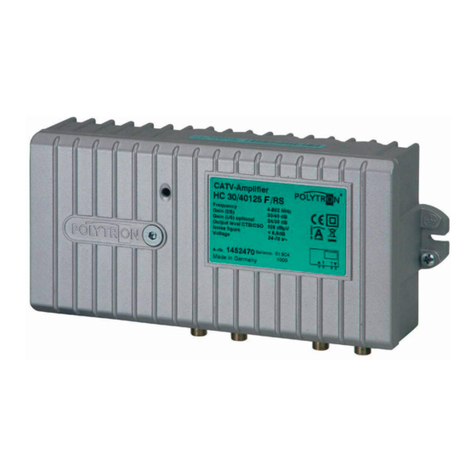
10
(1) Signal input (PG11 or F)
(2) Line Out
Depending on the assembly of distribu-
tion or splitter modules this output de-
livers a looped-through input signal at-
tenuated from –1 to –4 dB.
Additionally the remote feeding voltage
can be fed in line via this socket. (Fac-
tory setting: not active -Jumper bridge)
(3) Input test socket
Bi-directional test socket for measure-
ment of input signal without operation
interruption.
(4) Return path diplexer
The return path diplexer can be config-
ured depending on capacity needs, for
a frequency range up to 30 or 65 MHz.
The forward path begins at 47 resp. 86
MHz. (Factory setting: Jumper bridge,
only forward path is active).
(5) Equalizer in front of first ampli-
fier stage
An equalizer compensates the increa-
sing attenuation of passive compo-
nents at higher frequencies. It ensures
that the first amplification stage is not
overburdened with low frequency
parts. However, at this place it in-
creases the noise figure at lower fre-
quencies, dependent on its attenua-
tion. If possible it is therefore recom-
mended to place an equalizer behind
the first amplifier stage.
(6) Variable attenuator
The variable attenuator allows the
maximum amplification setting to be
reduced to the required amplification in
the forward path, thus enabling the ad-
justment of the output level.
(7) Equalizer after the first amplifier
stage
An equalizer or a variable attenuator
(max -6 dB) can be installed at this
point. The output level will not change.
The main advantage is that the noise
figure of the amplifier is not increased
hereby. (Factory setting: Jumper
bridge for linear frequency response).
(8) Active / passive return path
The return path can be built-up with
amplification (active) or without (pas-
sive). The amplification resp. attenua-
tion of the return path is adjusted with
the built-in attenuator of the plug-in
module. (Factory setting: Jumper
bridge).
(9) Return path equalizer
An equalizer in the return path ensures
that frequency dependent attenuation
differences could be compensated.
(Factory setting: Jumper bridge for lin-
ear frequency range).
(10) Output test sockets
On the test socket the signal is availa-
ble as -20 dB attenuated signal and
thus it allows measurements and ser-
vice activities without interrupting the
operation.
(11) Variable output configuration
Two operating outputs or alternatively
one operating and one test output can
be configured with splitter and tap
modules. Thus it is possible to either
distribute the signals on more than one
line, or make measurements without
affecting the operation nor having to
open the amplifier. (Factory setting:
Jumper bridge).
